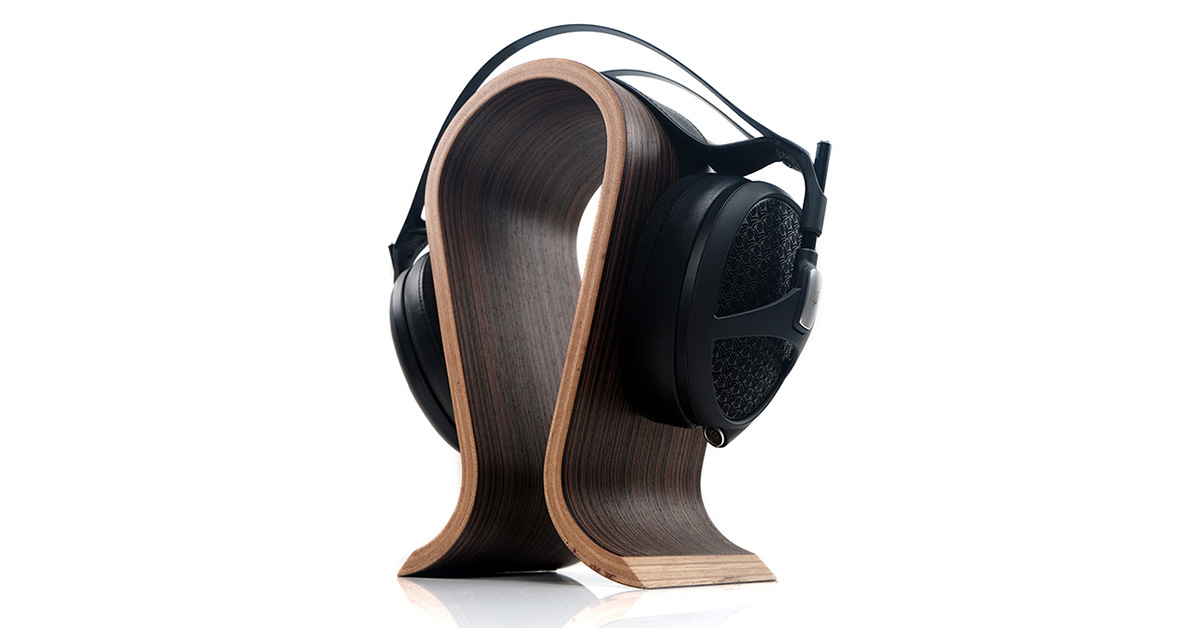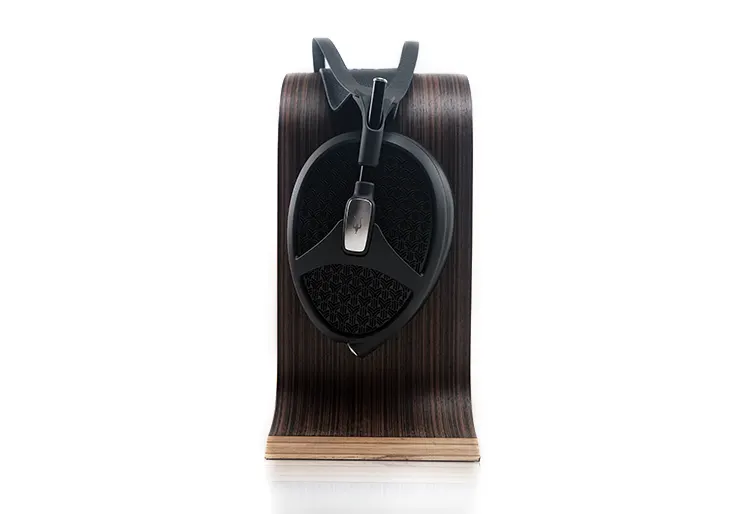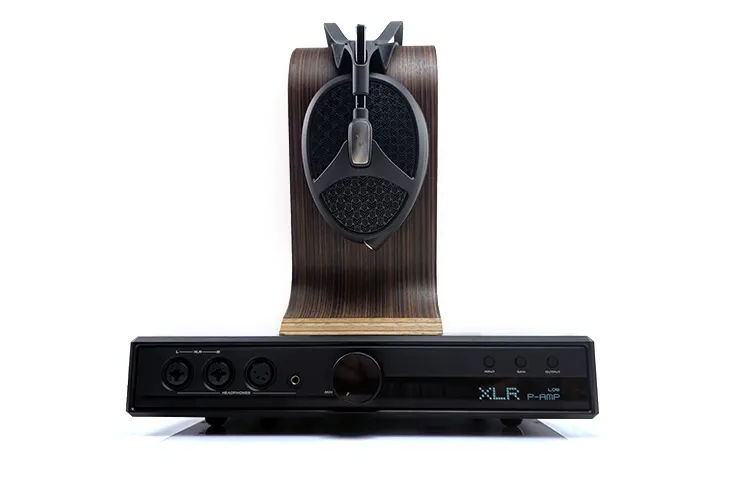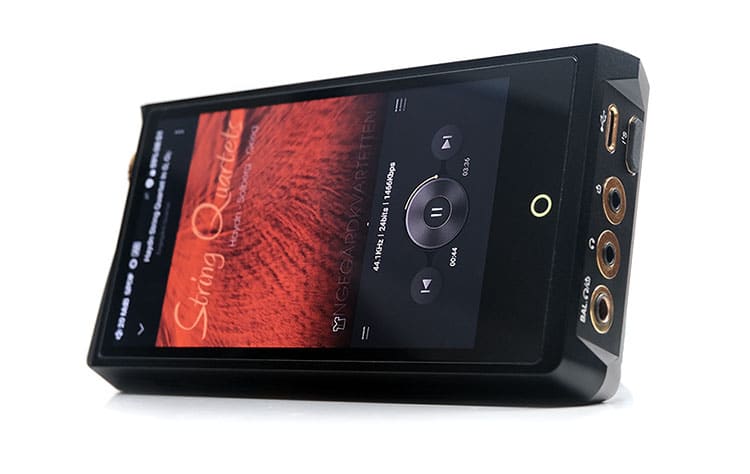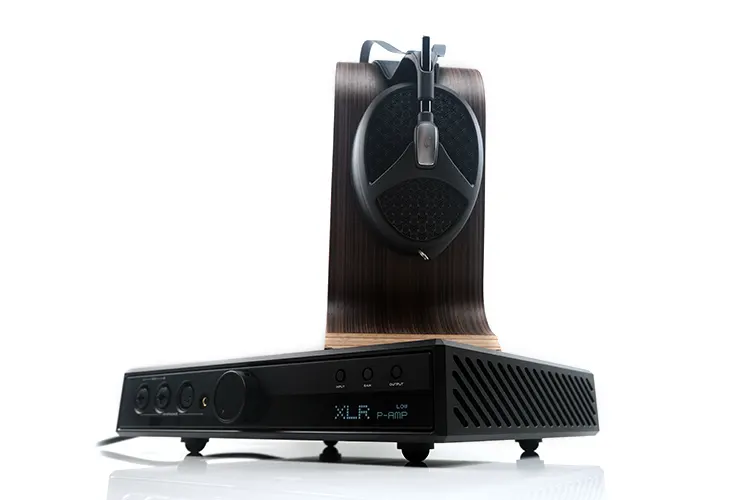Sound Impressions
Summary
The Meze Audio Empyrean II tuning is not an original with ‘refinement’. In fact, it sounds quite different and in a lot of ways a significant improvement, not least on a technical level.
Gone is the warm and welcoming thick embrace of the old and instead we have a new cleaner, more incisive sound signature closer to a neutral tone with enhanced contrast. It also sounds more open, especially through the mids and highs which in turn delivers an improved perception of clarity and instrument separation.
It is still not what I would term as a reference headphone. There is an element of V-shaping in its sound signature with an elevated bass shelf and enhanced upper-mids and treble presence over the darker-sounding original, (Duo pads vs Leather pads).
Arguably, though Empyrean II is now the real deal. What I mean by that is a stronger shift to tonal ‘accuracy’ with better success in articulating nuanced detail in a more forceful manner. It sounds like a headphone with reduced coloration and in doing so it has more flexibility to cope with a wider range of genres.
Original hardcore Empyrean owners might shudder at the thought of losing that richer and heavier tuning. Truth be told, I get where they are coming from because I have had one for 5 years and understand its strengths and weaknesses quite well.
Rather, what the Empyrean II offers is something new and a performance that I think will have a wider level of appeal to a broad yet still quite discerning audiophile audience out there.
Pads
As before, you have two sets of pads that have a fundamental effect on the type of sound signature from the Empyrean II. If you want the TLDR summary the Duo pads match my listening preferences more than the angled Alcantara pads.
The Duo pads create the best gateway for the original Empyrean owners to get into the new Empyrean II tuning. It’s the smoothest sounding with the best bass presence creating a stronger fundamental essential for enjoying modern pop, rock, and EDM.
Midrange timbral qualities are a bit richer sounding also compared to the lighter and higher contrasting presentation from the angled Alcantara alternatives.
You still get a bit of mid-range and lower-treble energy on the Duo pads but it’s much more controlled, especially if you are using the copper PCHUD cable. I tend to find the silver PCHUD cable to tease out more upper-mid percussion and treble energy which may or may not be to your liking.
The angled Alcantara pads will drop that bass shelf by a few dB and in doing so create a lighter airier sound signature with a reduction in lower-register notes fundamental presence and more odd-harmonic influence in the mids timbre.
Your listening attention will shift upwards to an intricate and very articulate mids and highs performance. Staging sounds taller and actually a bit wider with more perceived space compared to the Duo pads. It will, however, sound a bit shallower with a reduction in both warmth and power from the lows.
Frequency Response
I alluded to it being V-shaped and technically that’s true but it’s one of the softer V’s out there so you won’t find muffled or hugely recessed vocals from the Empyrean II.
It does have a bass shelf up to 300Hz that is more elevated compared to the angled Alcantara pads but less so than the original Empyrean’s tuning.
The key difference is the post-bass drop on the Empyrean II curve from 300hz up to 1k which is more significant than the first Empyrean. That will reduce bass warmth bleed and significantly more so than the original helping to create a bit more separation and space in the subsequent mids performance.
From 1-2k, the Empyrean II FR is at its least elevated but I honestly do not find it distractingly recessed since the dip is quite narrow. The space and clarity are still very much there.
The Duo pads do seem to drop the vocal presence a little bit more compared to the airier Alcantara pads so if you want the stronger mids emphasis switch to those.
From around 3k onwards the Empyrean II rises, more so than the original and well beyond, almost up to 10k in terms of upper-mids and treble presence stronger presence. The original attenuated a lot beyond 4-5k and as a consequence sounds warmer and darker over the same region.
Here you get energy, particularly over the 4-6k for the Duo pads and more so for the Alcantara pads right up to around 8k. The perception of improved headroom and treble extension is palatable when comparing the Empyrean II’s highs to the original.
Timbre
It’s here you are going to hear the most immediate changes. The tonal balance of the Empyrean II has shifted more to what some might refer to as neutral but for me it a more of a play of contrasts heading towards that neutral sound somewhere in the middle.
With the Duo pads the bass response is at its strongest and so also is the warmth. However, with the more focused FR drop post-300hz it’s less so than the original’s beefed-up warmth all the up to the mids. It still retains a good note fundamental though so the bass depth and power are most noticeable with these pads.
The mids timbre is where the neutral to natural comes into play. More so on the lower mids up to around 2-3k where you get less of a bleed down from the stronger treble response on the new Empyrean II tuning.
It’s a nice balance between weight and agility and suits my listening preferences quite nicely. You get a degree more clarity and tonal accuracy over the original, less congestion, and a shorter decay length to help improve the perception of clarity.
The highs do have more presence than before, especially with the Alcantara pads, and you can pick up on that, especially with higher-pitching vocal harmonies and higher-pitching percussion such as tambourine shakes and high-hat strikes.
I tend to find a slightly smoother amp and DAC combo such as the HIFIMAN Prelude will reduce that emphasis compared to very neutral-sounding setups such as the dCS Lina stack.
Staging & Dynamics
Overall, the soundstage of the Empyrean II is more open and spacious sounding compared to the original Empyrean. It’s probably the second most noticeable change after the coloration shift, especially through the midrange.
This is a whole new treble sound for me offering better extension and headroom and in doing so, makes the original Empyrean sound rather dark, or at least darker and more veiled in the mids than how I perceived it before.
You will lose a bit of that heft on the low end despite its extension being just as good. The presence has dropped back a little with the Duo pads compared to the original leather pads and even more so with the Alcantara alternatives.
However, I find the Empyrean II’s control and definition of the bass as well as its sense of timing and articulation to have improved.
If you want an expansive and wider soundstage with plenty of air and excellent headroom then the Alcantara pads are the wiser pick. The perceived staging width is wider than the Duo, especially though the mids with more space for vocals to shine.
If you need a bit more depth and weight, or more power, and a more balanced presentation then the Duo pads are more suited.
Synergy
Efficiency & Sensitivity
The Meze Audio Empyrean II has a similar impedance rating to the original Empyrean at 32Ω impedance but has a slightly higher sensitivity rating of 105 dB SPL @ 1 kHz, 1 V compared to 101 dB.
I do not think that translates to a seismic shift in easy to drive though because when A/B’ed I could not hear much of a difference.
In fact, with the original’s stock full leather pads on I perceived it as being slightly louder than the Empyrean II though I would bet its psychoacoustics here at play as the original’s pads create a more closed-in and intimate staging quality.
Suffice to say, however, that the Empyrean II is as easy to drive as the original but at the same time, it will offer improved dynamics and a more spacious sound quality with better amplification.
The Empyrean line is one of the few high-end planar headphones that I have found to offer a fairly satisfying experience from portable gear such as DAPs and even some dongles.
I tested it across a broad range of DAPs including the Cayin N8ii and the HiBy RS8 down to dongles such as the HiBy FC6 and the Cayin RU7 and all of them gave me adequate volume and decent performance without clipping or a perceived lack of headroom.
That being said, the Empyrean II can scale and does sound at its absolute best with a more powerful and high-resolving setup. With big rigs like the HIFIMAN Prelude, (10W into 32Ω), you will hear a jump in dynamics over portable gear with an improved level of snappiness and power from the lows the most immediate change.
Portable Pairings
I tested 4 DAPs with the Empyrean II and they included the Cayin’s N7 and N8ii, FiiO’s M17, and the LP P6 Pro.
All four DAPs need to be connected in balanced mode to get the best performance, at least in terms of power. They also need to be set in high gain for enough volume wiggle room.
I think the first thing I noted was a slight variation in the headroom and dynamics on the lows from the Empyrean II pairing.
Of the four, the M17 connected to its 12V DC brick gets you that magical 3W into 32Ω output. Combined with its highest gain setting it delivers the most dynamic bass response but it also accentuates the highs giving the Empyrean II its most V-shaped sound signature.
The lows are excellent with plenty of punch and power but the highs are also the brightest of the four pairings over the upper mids so percussion and bass dominate at times. The vocals were imaged well, and to be honest they did not come off as overly sibilant on the Empyrean II but rather just a bit dry sounding.
The other 3 DAPs had a smoother midrange and treble response with the spacious N7 pairing the most rounded of the four for the upper-mids and treble tone.
The N8ii offers more vocal bloom and sweetness but has a degree more sparkle and upper-mid energy compared to the N7. Its tube P+ mode also had the softest bass response. The Empyrean II can sound more aggressive on the lows with the solid-state mode but the highs also sound a little sharper.
The P6 Pro is pushed harder than the other 3 DAPs as it has slightly less power but its Class A amp really comes alive at the top end of the volume dial and does deliver some meaty lows and a nice level of textured detail. It will give the Empyrean II a more intimate staging quality than the other 3 DAPs.
Desktop Pairings
I tried 4 different DAC/Amp setups including the HIFIMAN Prelude, the Feliks Audio Envy, the dCS Bartok, and the dCS Lina system.
I had no problems driving the Empyrean II from any of these. The resolution, coloration, and dynamic impact though do vary and I did have some preferences.
For example, the Prelude/Empyrean II gave me the most agreeable tonal balance. It has a more languid pace than the other amplifiers but combined with the Holo Audio Spring 2 Wildism Edition DAC it sounded ‘big’ with excellent bass weight and rich to slightly warm tonal quality throughout.
There is a slight treble attenuation there compared to the other tested systems but this suits the Empyrean II’s feistier upper-midrange quality.
If you want a stronger cleaner treble the likes of the dCS Lina will give you the most detailed representation. It sounded lightning-quick compared to the other setups.
The Lina/Empyrean II sounds more neutral with the Duo pads but offers the most energy and micro-detail pushing that MZ3 driver to the maximum.
The Bartok, (non-APEX 2.0), brings back a slightly warmer weightier tone to the Empyrean II and compared to the Lina combo has a more relaxed level of energy. It does, however, have more precision than the Prelude, especially on the lows where the notes felt more defined and better controlled.
The Envy pairing sits somewhere in between the Prelude and the Bartok. Granted, I was using the Bartok DAC out so some of that tonal signature carried through but the Envy added some tube smoothness to some quality depth and power.
The Empyrean II sounded a little bit tighter here than with the Prelude/Holo Audio setup but at the same time, it didn’t sound as expansive as the Prelude nor as articulate as the Lina pairing.

